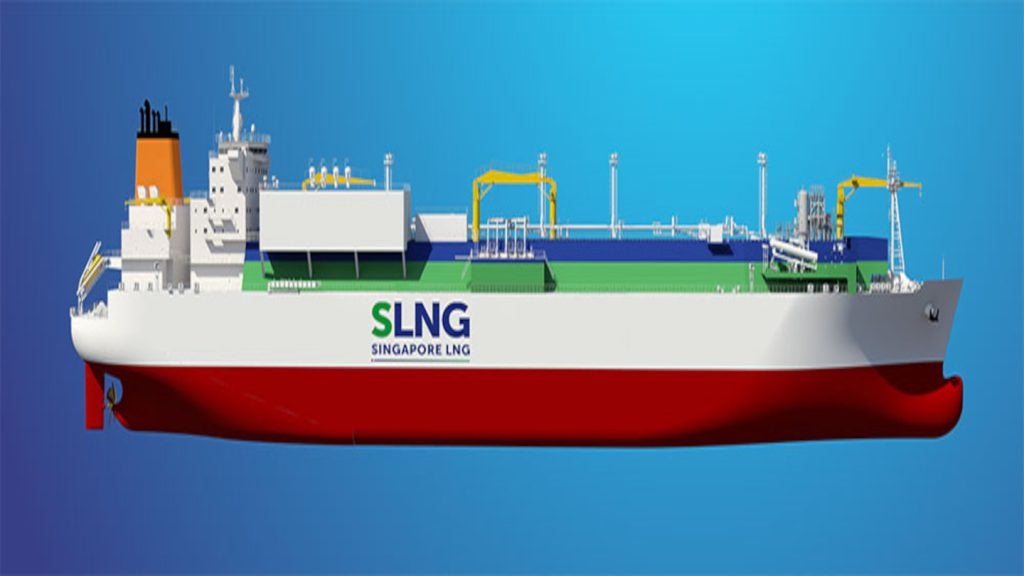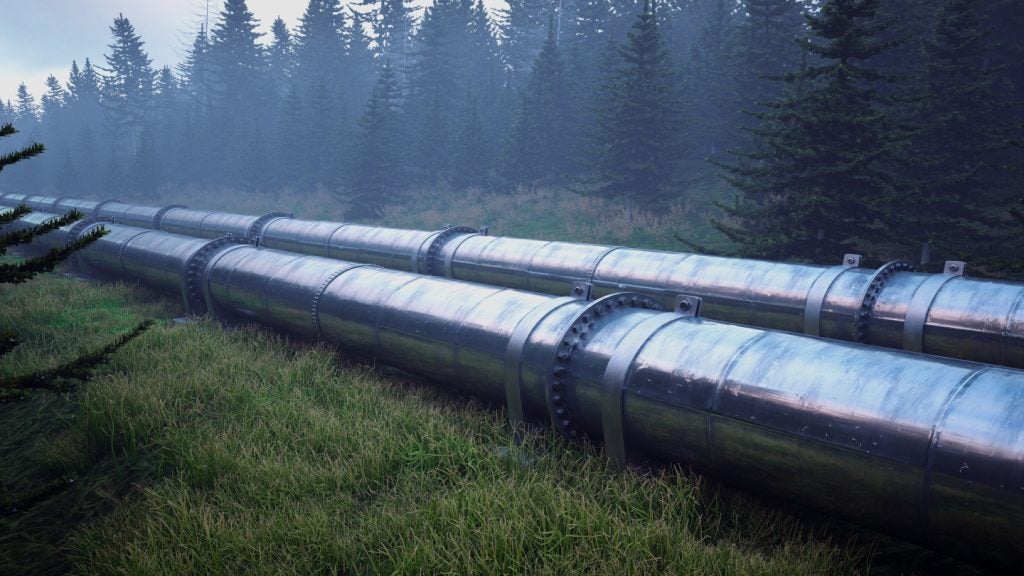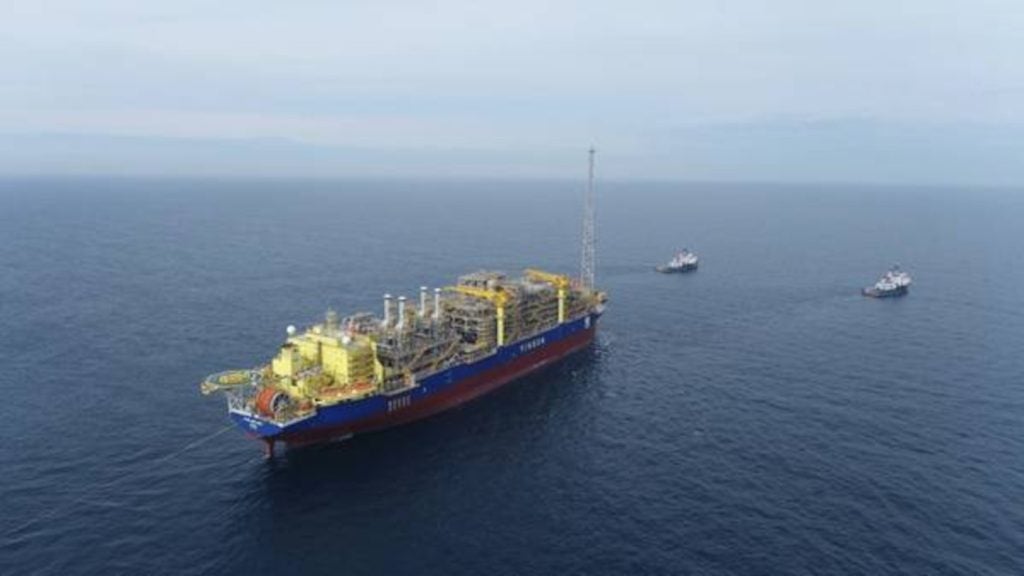
Schlumberger workers” class=”fullwidth” src=”https://www.offshore-technology.com/wp-content/uploads/image-digitalinsightresearch/Archive/nri/offshore/Schlumberger%20workers.jpg” />
Over the past couple of decades, the oilfield services (OFS) industry has benefited massively from oil companies’ growing tendency to outsource the technically complex tasks involved in drilling for hydrocarbons, both onshore and offshore.
While oil prices rose from the late 90s and through the first decade of the 21st century, orders for expensive rig equipment and subsea technologies flourished, the international rig count was growing and the industry’s biggest players – the likes of Schlumberger, Halliburton and Baker Hughes – experienced huge growth as they profited from their involvement in multiple stages of the exploration and production (E&P) pipeline. Schlumberger’s market capitalisation peaked in 2014 at $152bn, more than international oil companies such as Statoil and Conoco-Phillips. McKinsey estimated the OFS sector’s total gross earnings for 2011 at $750bn. When times were good, they were very good indeed.
"With the price of oil so high, firms are scrambling to pump it out of ever more remote and costly crevices," noted an Economist editorial on the rise of OFS companies – the "unsung masters of the oil industry" – in 2011. Over the past decade the oil industry’s annual spending on exploration and production has increased fourfold in nominal terms, while oil production is up by only 12%. The big services companies, which invest heavily in technology, have been growing by around 10% a year.
The OFS industry’s innovative technologies and techniques are reliant, however, on the overall growth and continued activity of the oil companies that rent or buy them. The inextricable ties between OFS companies and the oil sector mean that, when times get tough for Big Oil, service companies suffer along with them.
With the Brent crude and WTI oil price benchmarks still languishing below $40 and the oil industry’s sustained downturn showing no signs of a quick turnaround, it’s no surprise that the OFS sector is struggling too. There is no better place to start looking for evidence of the OFS industry’s pain than Schlumberger, the world’s largest oilfield services company.
How well do you really know your competitors?
Access the most comprehensive Company Profiles on the market, powered by GlobalData. Save hours of research. Gain competitive edge.

Thank you!
Your download email will arrive shortly
Not ready to buy yet? Download a free sample
We are confident about the unique quality of our Company Profiles. However, we want you to make the most beneficial decision for your business, so we offer a free sample that you can download by submitting the below form
By GlobalDataSchlumberger prepares for a difficult 2016
Oil prices of $100 per barrel or more were a reality as recently as summer 2014, but today that price environment feels like a distant paradise. The US rig count has been in freefall since autumn 2014, with the amount of active rigs falling from more than 1,900 in October 2014 to just 809 a year later, according to data from Baker Hughes, although onshore activity has been more strongly impacted than offshore.
Global oil industry spending on E&P dropped by 20% in 2015, and this slump is likely to continue for the majority of 2016. Around 74% of the oil and gas companies surveyed by advisory firm Evercore ISI late last year cited oil prices as the most important determining factor when working out spending plans.
Schlumberger has been relentlessly slashing its workforce over the last year in an attempt to account for the industry downturn. The company eliminated 20,000 jobs in the first four months of 2015. More cuts took place in late 2015 and January of this year, bringing the full toll to 34,000 jobs lost since November 2014, representing just over a quarter of the company.
The latest job cuts – and hopefully the last during this downturn, the company said – came as Schlumberger warned of ‘unscheduled and abrupt activity cancellations’ from its customers, and disclosed that it had made a $1bn net loss in the fourth quarter of 2015, its first quarterly loss in 12 years. The company wasn’t shy in conveying its plan to downsize in expectation of further reductions in oil industry activity this year.
"Negative market sentiments intensified in the fourth quarter, with oil over-production continuing and extending the bearish trend in global inventories," Schlumberger said in a statement in January. Schlumberger chairman and CEO Paal Kibsgaard added that he could see "no signs of pricing recovery in the short to medium-term".
An industry under pressure
Of course, Schlumberger is not alone in its struggle to deal with the dramatic drop in activity from its customer base. Among its main competitors, Halliburton has laid off up to 27,000 workers since its peak staffing levels in 2014, while Baker Hughes has cut 16,000 positions since the beginning of 2015.
At the lower end of the OFS food chain, companies are faring no better. In the city of Medicine Hat, Alberta, Canada, layoffs at two oilfield service companies put 300 people out of work in March alone. Job cuts in the OFS sector have contributed to a 91% year-on-year increase in the collection of employment insurance across the province. In regions such as Alberta, where hydrocarbons provide a strong source of employment, the trickle-down economic effects are starkly visible – Medicine Hat’s food banks have seen a 500% increase in usage since last year.
"You can’t begin to see much improvement until you’re sure you have a bottom," Kevin Neveu, CEO of Canada’s largest drilling rig contractor, Precision Drilling, told the Calgary Herald in March. "When you don’t know how deep it’s going to get, you are compelled to continue making a lot of hard, firm decisions."
Industry analysts and company officials are expecting an oil price recovery to begin this year – hitting $50 will inspire confidence that an upturn is properly underway, according to Neveu – but E&P activities are unlikely to pick up significantly until 2017.
"We maintain our view that there will be a noticeable lag between higher oil prices and higher E&P investments given the fragile financial state of our customer base, which means that there will be no meaningful improvement in our activity until 2017," said Kibsgaard at the recent Scotia Howard Weil 2016 Energy Conference in New Orleans.
In the meantime, service providers are cutting costs and limiting their footprints as best they can, while oil companies pay less for the same work, putting pressure on the OFS industry from both sides. As Kibsgaard noted at the conference: "Oil and gas operators have once again activated the traditional playbook they have used to navigate every industry downturn since the 1970s. This dictates halting investments in exploration, aggressively curtailing development activity and relentlessly squeezing service industry prices."
Bouncing back
Although many of the factors that will influence the timing of any oil price recovery are outside of OFS companies’ control (most importantly the position of OPEC, which is currently maintaining production to protect its members’ market share at the expense of the global oil price), the industry is employing strategies to shore up its defences while the storm still rages.
Given the intense cost pressures being exerted by oil companies that are heavily focusing on production efficiency, OFS firms are increasingly looking to develop integrated drilling and production technologies that can reduce costs for clients and support bigger contracts for service companies. A good example of this is Baker Hughes’s Hammerhead ultra-deepwater completion and production system, which has been designed to deliver an all-in-one solution for clients looking to tap ultra-deep resources in the Gulf of Mexico’s Lower Tertiary play and elsewhere.
Large-scale mergers and acquisitions activity is supporting this drive for integration, as exemplified by Schlumberger’s proposed $14.8bn acquisition of equipment manufacturer Cameron International, as well as Halliburton’s larger and more controversial attempt to merge with Baker Hughes in a $35bn deal.
While the Halliburton-Baker Hughes deal remains mired under regulatory scrutiny, Schlumberger’s acquisition has been cleared by the US Department of Justice, the EU Commission and China’s Ministry of Commerce. The deal, which is expected to clear in the coming weeks, has been moving quickly past regulators as it represents a move by Schlumberger to diversify into the oilfield equipment market, while the Halliburton-Baker Hughes deal (which represents, after all, the joining of the second and third largest OFS companies in the world, respectively) is seen as more of a threat to competition.
Diversification in other directions might also provide new revenue streams for OFS companies. Thinking outside of the box, offshore wind farms require huge feats of engineering to install and maintain over the long-term, and oilfield service companies’ complementary skills and experience of rough working environments could happily transfer over. Beginning to expand into the offshore wind energy sector, which is growing fast in Europe and just taking off in the US, could provide a respite during the oil price slump as well as a much-needed means of limiting the industry’s exposure to the commodities cycle.
In the end, however, this cycle looks set to swing back into an upward trajectory by 2017 for the companies resilient (and deep-pocketed) enough to take advantage of a higher oil price and more sustainable levels of industry E&P spending. Evercore ISI senior managing director and partner James C West struck an optimistic note, as quoted by Rigzone, during a December 2015 webinar.
"We continue to believe current spending levels as well as oil prices are unsustainable and the longer spending remains subdued, the stronger and longer the coming upcycle will be," he said. "It’s a cycle like the others, and it always looks the worst at the bottom of the CAPEX cycle which we are approaching; once we have visibility on this capital spending bottom, the recovery comes into view."







